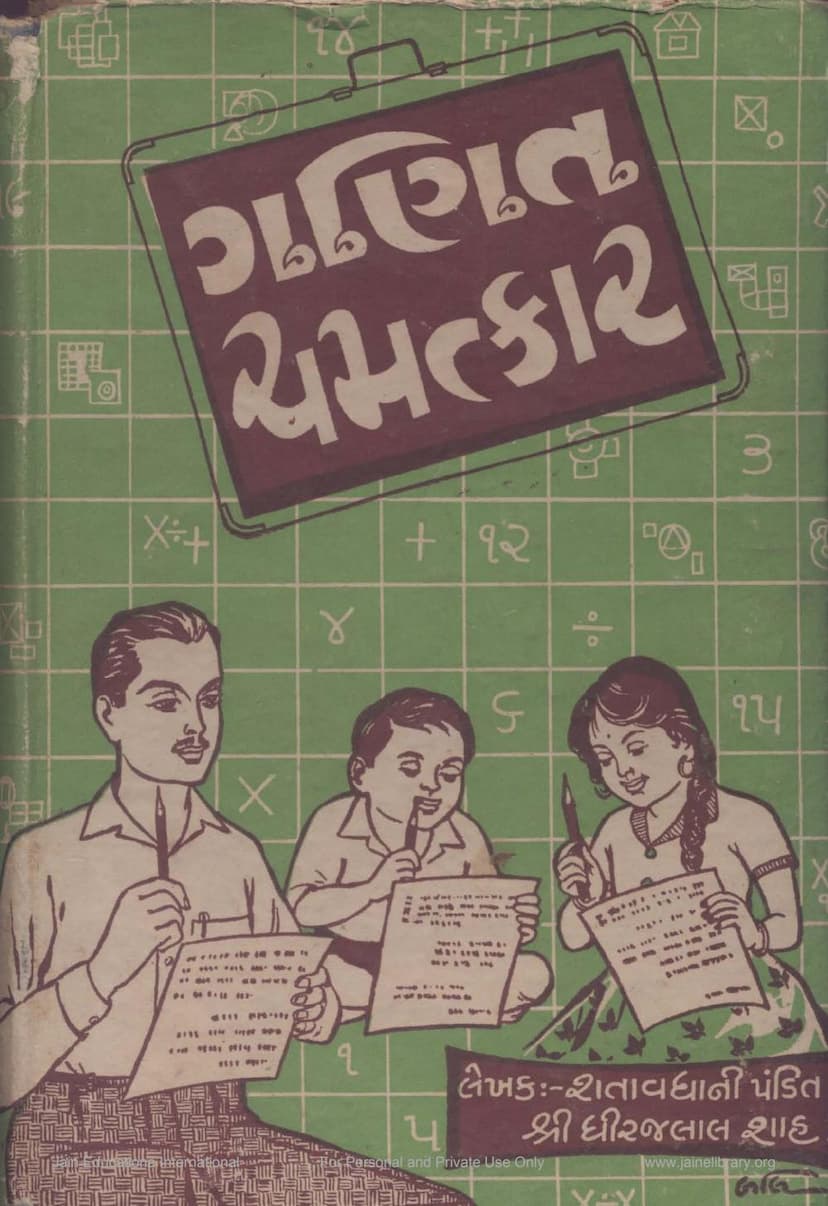Ganit Chamatkar
Added to library: September 1, 2025

Summary
"Ganit Chamatkar" (Mathematical Wonders) by Dhirajlal Tokarshi Shah, published by Pragna Prakashan Mandir in 1964, is a Gujarati book that explores the fascinating and often surprising aspects of mathematics. The author, a renowned "Shatavadhani" (one who can focus on 100 things simultaneously), presents a collection of mathematical tricks, puzzles, and magical experiments designed to make numbers and calculations engaging and astonishing.
The book is divided into two main sections:
Part 1: Principles and Experiments (Siddhant ane Prayog)
This section delves into various mathematical concepts and demonstrates them through practical, wonder-inducing examples. It covers:
- The Magic of Numbers: Chapters explore the unique properties and tricks associated with numbers, starting with the magic of the digits 1 through 8 and then the digits 1 through 9.
- The Structure of Numbers: It explains the fundamental building blocks of numbers and how their composition leads to interesting mathematical outcomes.
- Miraculous Numbers: Certain numbers are highlighted for their extraordinary properties and how they behave in calculations.
- Number Pyramids: The creation of numerical pyramids through multiplication and addition is explored.
- Various Methods of Addition and Subtraction: The book presents different techniques for performing addition and subtraction, including methods for checking their accuracy.
- The Power of Multiplication: Multiplication is showcased as a potent force in mathematics, demonstrating its ability to rapidly expand numbers and reveal natural phenomena. This includes a famous anecdote about the exponential growth of rice grains offered as a reward.
- Unique Multiplication Techniques: Two distinct and less common methods for multiplication are explained.
- Multiplication Experiments: Several engaging experiments using multiplication are presented.
- The Significance of Division: Special features and properties of division are highlighted.
- Completing Division: Techniques for successfully completing division are discussed.
- Magic Squares and Other Yantras: The book explores magic squares (Sarvatobhadra and others), where numbers are arranged in grids such that the sum of numbers in each row, column, and diagonal is the same.
- Mind-Reading Numbers: It explains methods and "machines" that can seemingly predict numbers thought by others.
- Three "Fixed Outcome" Experiments (Siddhank): These are experiments where the result is predetermined by the performer.
- Four Card Tricks (Ganjifa): The book presents card tricks that utilize mathematical principles to amaze the audience.
- Ten Miraculous Experiments: A collection of ten captivating mathematical demonstrations.
- Numerical Amusement (Ank Vinod): This section likely contains humorous or light-hearted mathematical observations and riddles.
Part 2: Mathematical Knowledge Enhancers (Ganitgnan ni Purti Karnare)
This part focuses on a collection of 100 mathematical puzzles and riddles designed to challenge and improve the reader's problem-solving skills. These puzzles cover a wide range of mathematical challenges, from basic arithmetic to more complex logical problems.
Overall Theme and Significance:
"Ganit Chamatkar" aims to demystify mathematics by presenting it as a source of wonder and amusement. The author, leveraging his extraordinary memory and observational skills, makes complex mathematical ideas accessible and entertaining. The book emphasizes that mathematics is not just about calculation but also about understanding patterns, exploring relationships between numbers, and discovering the inherent "magic" within the world of numbers. The inclusion of puzzles and experiments encourages active learning and engagement with mathematical concepts. The book also highlights the historical prevalence of such mathematical arts in India.